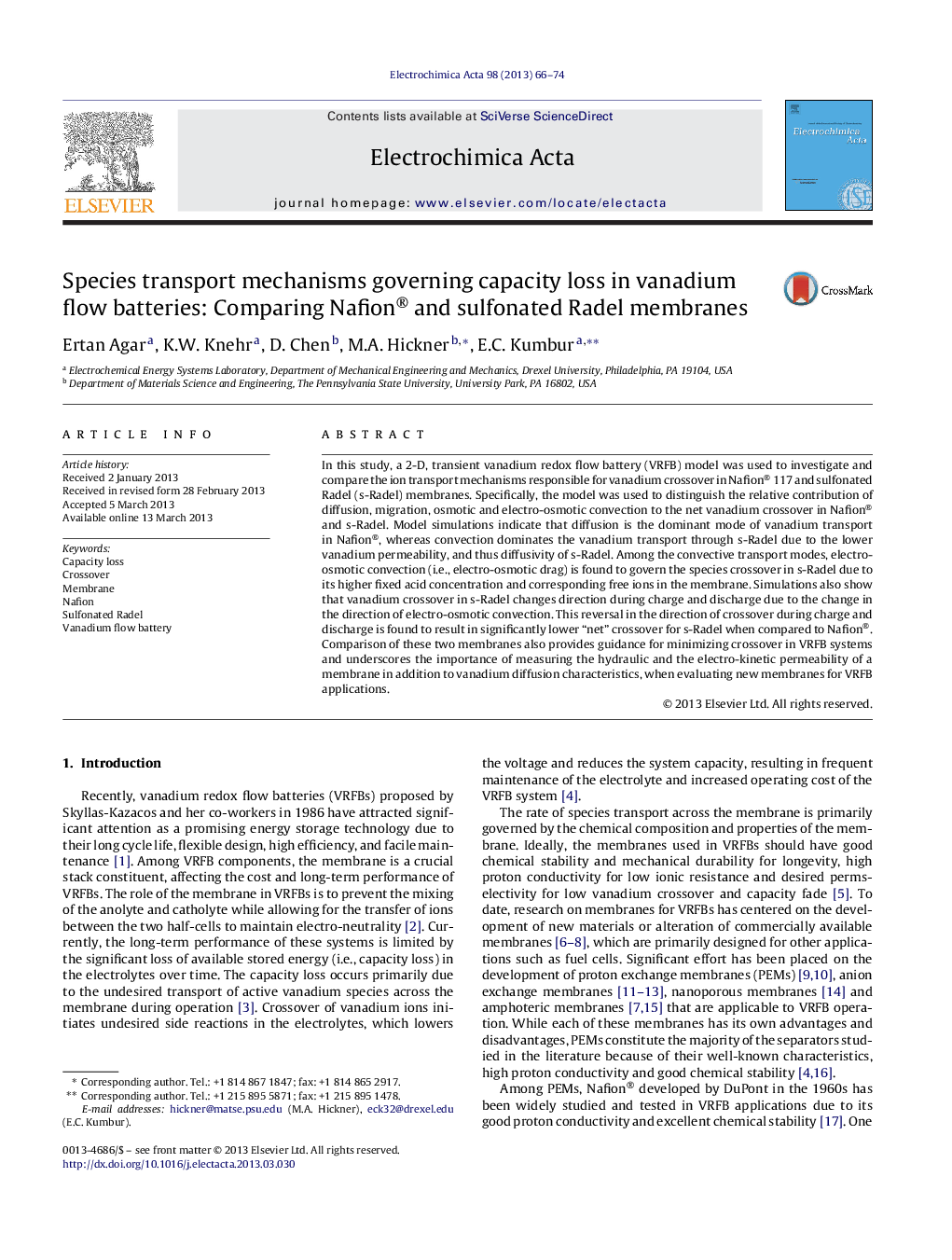| Article ID | Journal | Published Year | Pages | File Type |
|---|---|---|---|---|
| 187381 | Electrochimica Acta | 2013 | 9 Pages |
•Species transport mechanisms are investigated in Nafion® and s-Radel for VRFBs.•Unlike diffusion in Nafion®, crossover in s-Radel is dominated by convection.•In particular, electro-osmotic convection is the dominant mode in s-Radel.•Change in direction of convection causes a lower crossover in s-Radel.•Hydraulic and electrokinetic permeability are as important as vanadium permeability.
In this study, a 2-D, transient vanadium redox flow battery (VRFB) model was used to investigate and compare the ion transport mechanisms responsible for vanadium crossover in Nafion® 117 and sulfonated Radel (s-Radel) membranes. Specifically, the model was used to distinguish the relative contribution of diffusion, migration, osmotic and electro-osmotic convection to the net vanadium crossover in Nafion® and s-Radel. Model simulations indicate that diffusion is the dominant mode of vanadium transport in Nafion®, whereas convection dominates the vanadium transport through s-Radel due to the lower vanadium permeability, and thus diffusivity of s-Radel. Among the convective transport modes, electro-osmotic convection (i.e., electro-osmotic drag) is found to govern the species crossover in s-Radel due to its higher fixed acid concentration and corresponding free ions in the membrane. Simulations also show that vanadium crossover in s-Radel changes direction during charge and discharge due to the change in the direction of electro-osmotic convection. This reversal in the direction of crossover during charge and discharge is found to result in significantly lower “net” crossover for s-Radel when compared to Nafion®. Comparison of these two membranes also provides guidance for minimizing crossover in VRFB systems and underscores the importance of measuring the hydraulic and the electro-kinetic permeability of a membrane in addition to vanadium diffusion characteristics, when evaluating new membranes for VRFB applications.
